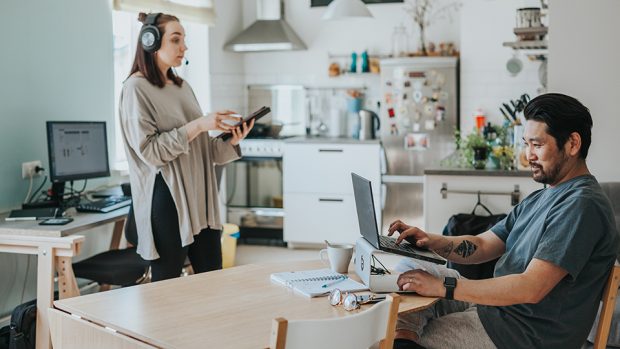The Ongoing Pandemic: Making Changes to Your Home to Suit Your Situation
At the risk of sounding a little trite, it’s safe to say we’ve all become more familiar with our homes over the course of the pandemic.
When you have nowhere else you can safely go, and you can’t see your friends or family because you’re trying to stop the spread, you’re essentially stuck living with yourself and the amenities your home has to offer. Many found that when the pandemic initially struck and the world around them closed down, smaller living spaces that had been manageable before quickly became unsustainable, moving to more spacious areas outside the city. For those who couldn’t afford to move during this world-altering disaster, however, they were stuck staring at the same four walls, watching Netflix until their queue was empty and staring at the walls until they spoke to them, their life mutating into a grotesque, “Yellow Wallpaper-like” parody of what it was before.


We thought that the pandemic was lifting, but with Delta and Omicron making the rounds and a new, even MORE contagious variant recently being discovered, the reality is starting to sink in: COVID is going to be with us for a long, long time. With work-from-home lifestyles becoming more common and more people who have been vaccinated getting infected, the chances of us returning to a pre-pandemic normal anytime soon are almost nonexistent.
Since we’re going to be in our homes for an indeterminate amount of time, we might as well try to make our homes as comfortable as possible, making interior design choices that will suit our new normal. In the service of that, here are some additions you can add to your home, varying in price and difficulty: for some of them, you’ll no doubt require a professional to work on them, but for others, you can do them yourself at an overall low-cost.
Let’s get into it.
Build Yourself a Home Theater
Missing the comforts of the silver screen? You wouldn’t be alone: going to the movies was a popular pre-pandemic pastime, and there’s no denying the impact that COVID-19 has had on the industry as a whole. While some vaccinated folks are going to theaters to see popular new titles like “Spider-Man: No Way Home” and “The Matrix: Resurrection,” with new COVID variants emerging and boosters not being able to keep up, the chances are good that we’re all forced inside soon.
Fortunately, if you’re missing the cinema experience or your local movie theater closed down due to the first wave of the pandemic, it’s actually relatively easy to build yourself a basic home theater: all you need is a projector, some comfy chairs, a blank white screen or blanket to watch the film on, and a place to prop everything up. You don’t have to spring for expensive speakers or equipment unless you want to: you can set up a cheap little home theater for relatively little, and simulate the experience of eating popcorn in a movie theater from the comfort of your COVID-safe domain.
Make Your Home More Accessible
This is more for people who are older adults or living with older adults as their primary caretaker: if you haven’t invested in measures to make your home more accessible for your older adult, now is the time. Accessibility measures can run the gamut from installing handholds and bars in places where your older adult may fall (such as the shower) to installing ramps and even home elevators to facilitate them transitioning between stories.
The extent to which you should make your home accessible will depend on the issues your older adult is struggling with: some DIY measures, such as the aforementioned handholds, may be enough, or you may require a professional to come in and install more heavy-duty measures, like ramps and elevators. If your older adult made a choice to avoid the nursing home and you are their primary caretaker, it is more important than ever that you’re able to provide the quality of care they need, so be sure to take necessary measures to ensure their health is maintained.
Expand Your Work Space
Suppose you recently made the switch to working at home. In that case, you may have done what you can to make do with the equipment and space you have, squeezing a tiny little home office into an available corner and not investing in what you assumed was a temporary situation. With the future leaning toward remote work, however, it might be important to invest in creating an actual office.
Take inventory of your current setup, and see if you need to add any furniture or hardware to make things run more smoothly. If you need a bigger desk, a second monitor, or even knick-knacks and décor to make yourself feel more at home at your workspace, now is the time to invest in them.
What you add or change about your home will depend on your specific needs, so feel free to take the temperature of what you feel like you need to make your home more comfortable and functional. We’re all in this together for the foreseeable future, so don’t be afraid to invest in making sure you’re as comfortable as possible in the meantime.